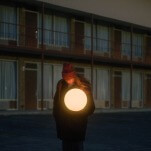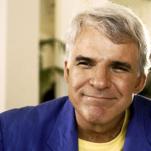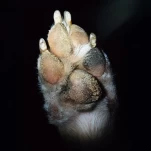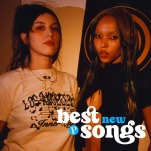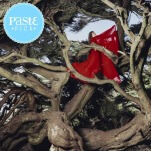Is Indie Dead?
Illustrations by Samuel Bosma SEEING THINGS DIFFERENTLY
SEEING THINGS DIFFERENTLY
Those around for punk’s clarion call could’ve never imagined that their festering rage would lead to this. If the movement’s earliest adopters had skipped forward 25 or 30 years to see what they’d indirectly wrought, they might’ve hung themselves by their guitar strings.
Stripped of all its developmental context, what they would see and hear would be jarring: “indie” bands on the radio, “indie” bands on television, “indie” bands on the Billboard charts, “indie” bands if not on the cover then certainly teeming inside mainstream magazines. And that’s only the small slice of the media landscape they’d be able to recognize on their own. We’d have to coach them through the whole Internet thing, pulling up Pitchfork, explaining “pageviews” and blogs, watching their eyes bug as they process the modern world and then narrow back down as they contemplate all these new names: “Spoon? Death Cab for Cutie? Pavement reunion? Who are these guys?”
“They’re indie bands,” we’d tell them, and then we’d give them a little time to let it sink in, maybe play Slanted and Enchanted—ease them in slow before dropping the first bombshell.
And what would that be? Well, for starters, what about how this Death Cab band is actually signed to, um, Atlantic Records: “Yeah, that Atlantic. It’s owned by Warner now. Yeah, that Warner. Anyway, they started out on an indie label—oh no, you wouldn’t know it, it’s called Barsuk, started in ’94. One of those Seattle labels. What’s up with Seattle? Let’s save that for later. Anyway, Death Cab, yeah—signed with Atlantic a couple years ago and everyone got all clammy and nervous about it, thought the band had probably sold out and figured we should resign ourselves to just loving The Photo Album and politely ignore whatever else was gonna happen down the line. Then the album came out and, you know, it wasn’t so bad. What’s that? Oh, yeah. People do still call them indie, yeah.”
Or maybe we’d talk about Spoon. That might be easier to swallow: “So there’s this label, Merge. Spoon’s on it, a bunch of other great bands, too. The Merge folks have been doing their own thing for a while now, and Spoon’s been with them for about five albums. People really dig ’em. But here’s the crazy thing—you know Billboard? Well, they’ve got this chart now just for independent albums, and every record Spoon’s put out has been on it. Except for the one they did with a major, Elektra—yeah, Elektra’s owned by a major now, too, or at least it was before it folded—anyway, that album sold like crap, but the others have all done pretty well. The past two were even up in the Billboard 200 with all the pop stars. I know, right?”
Then later, maybe after a few PBRs: “OK, so let me tell you about this label Sub Pop. You haven’t heard of it yet but you will pretty soon, I guess. These days, they’re kind of this hero label because they’ve been consistently awesome for pretty much the past 20 years, just bam bam bam, one great, super-relevant band after another. The first big one, Nirvana—God, just brace yourself, trust me. I can’t even explain. Anyway, they’ve got this reputation that precedes them. You know how you guys will go out to those gritty little record shops of yours and scrounge up everything you can find from, like, Homestead and Touch and Go and K and all that? We pretty much do that with Sub Pop. We just know it’ll be good. Venerable, ha, yeah. Except here’s the thing—they’re part-owned by Warner. Yeah, 49 percent. Wasn’t always that way, but it happened, you know? They’re still trucking on and all, but some folks won’t call them indie. Kinda revoked the badge.”
And then after a few more beers: “Oh yeah, her? That’s M.I.A. No, not ‘Mia.’ She’s Sri Lankan—Sri Lankan, that’s what I said. Well, I guess it would be electronica—yeah, like that guy Brian Eno, sort of. Most people now wouldn’t say that, though. She’s on Interscope, which is a part of Universal, which, right, is about as far away from indie as you can possibly get. But you know what’s weird? She probably sings more about political issues and gives less of a shit about what people think of her than a whole lot of ‘independent’ rock bands right now. And so yeah, she’s in with the indie folks, too. Where are all the guitars? I don’t know, man. I don’t know.”
And as they chew their bottom lips in deep thought, twiddle the zippers on their leather jackets and cross and uncross their ratty-jeaned legs, we’ll nod slowly and unsurely along with them. Because we’re confused, too.
Early on, “indie” meant what punk meant, which was a willful operation outside the mainstream music industry, a fully do-it-yourself approach to everything about music. It wasn’t about a specific sound at first, though with the limited elements prevalent in early punk bands—guitar, drums, bass, three to five white guys, technical proficiency optional—the music could only get so diverse. In England, the “indie” sound solidified much earlier than in the States; over here, it crystallized around the time punk broke in the late ’80s and early ’90s. The underground bands most visible to the mainstream almost all signed to majors sooner or later, and since they could no longer be defined by their label independence, they were defined by their generally similar sound: some imprecise amalgam of the Pixies’ howling melodics, Sonic Youth’s distortion, Pavement’s shambling swagger and Nirvana’s raw nerve. Meanwhile, back in the real indie dugout, bands formed that had little or nothing to do with the recently genrefied punk acts: riotgrrrls like Bikini Kill and Heavens to Betsy, lo-fi bedroom maestros like Elliott Smith and Cat Power, junk-drawer gypsies like Neutral Milk Hotel—they were all indie, too, right?
Well sure, why not? Who was indie to turn anyone away?
-

-

-

-

-

-

-

-

-

-

-

-

-

-

-

-

-

-

-

-

-

-

-

-

-

-

-

-

-

-

-

-

-

-

-

-

-

-

-

-













